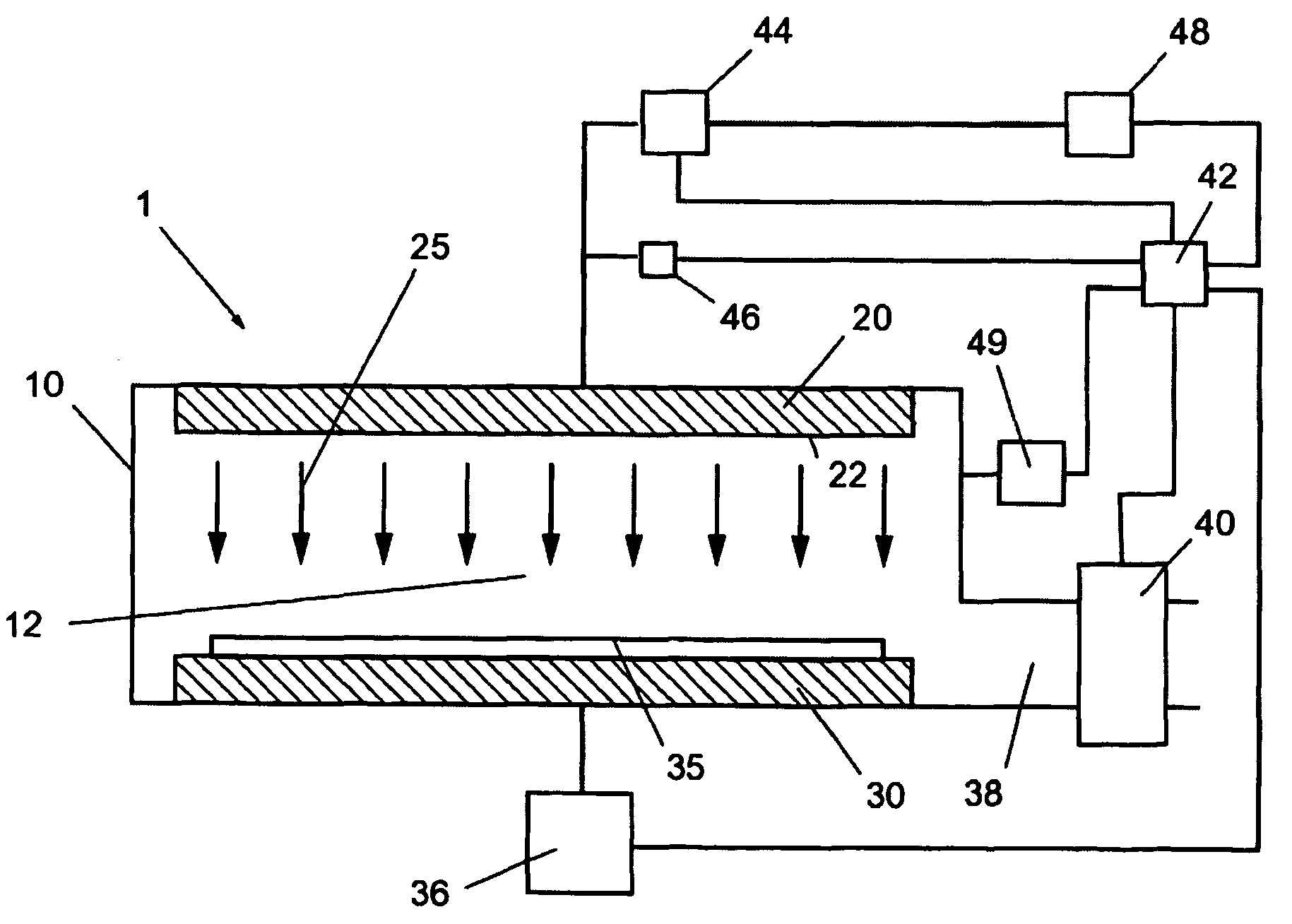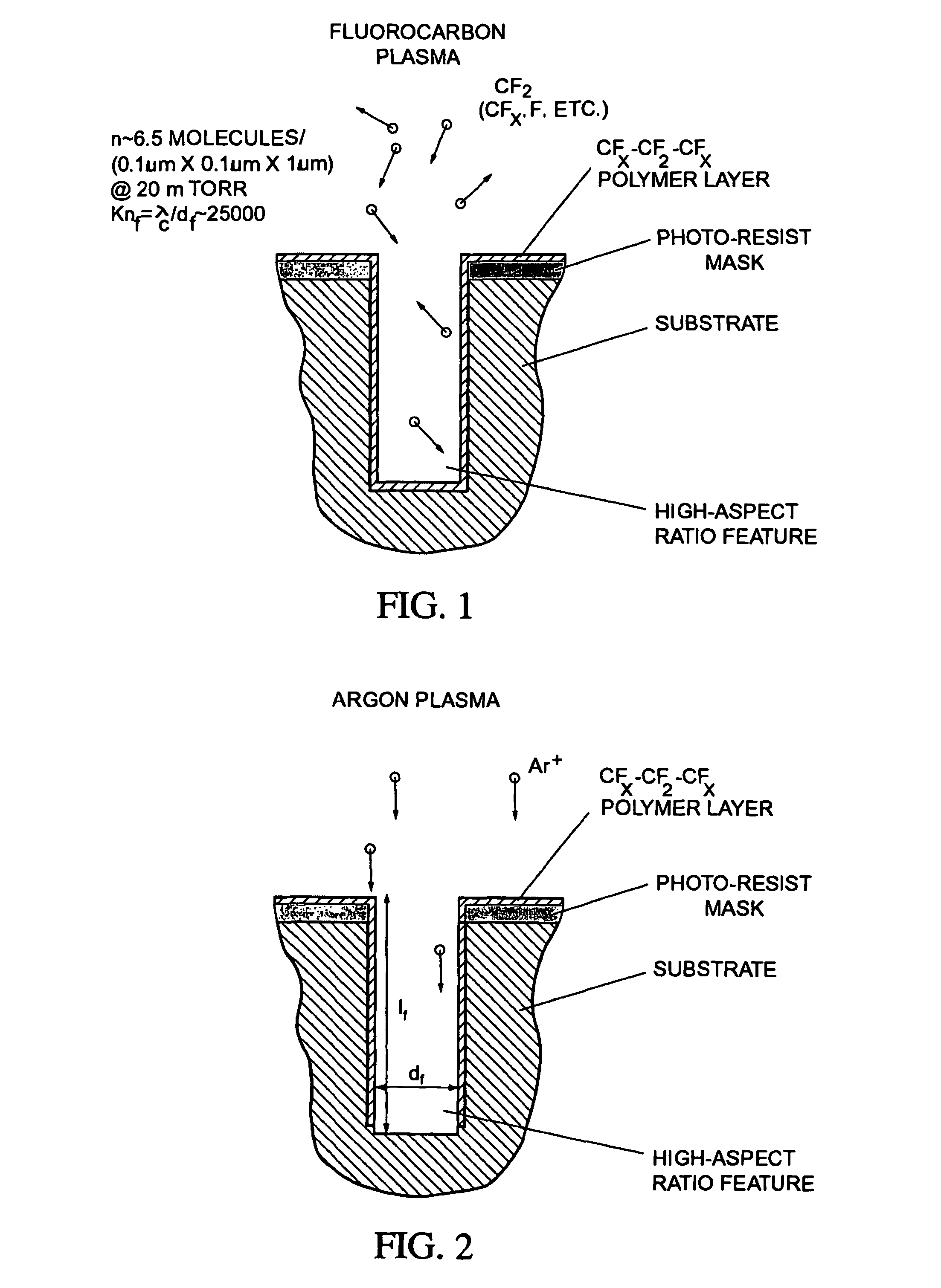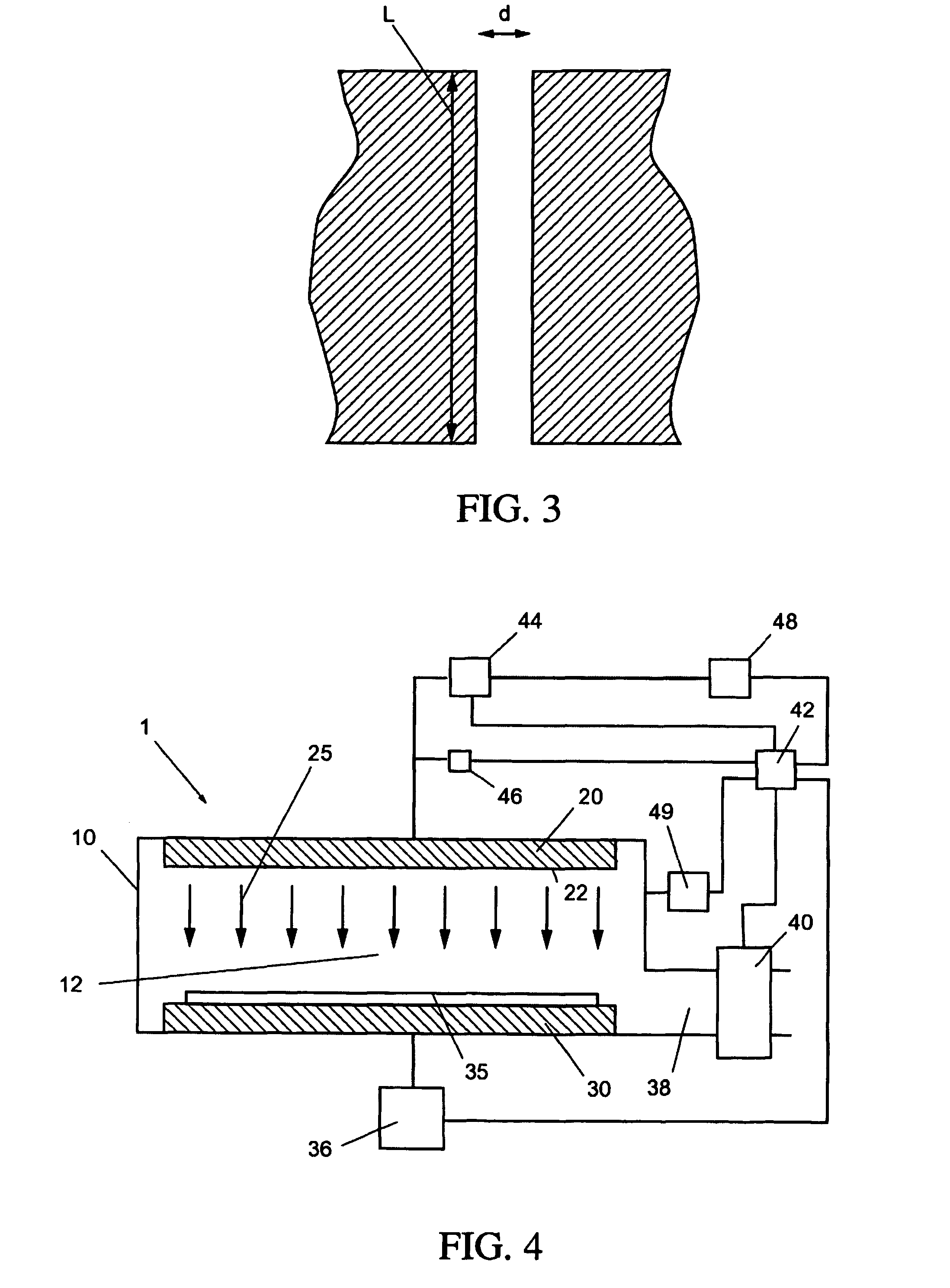Directed gas injection apparatus for semiconductor processing
a gas injection apparatus and semiconductor technology, applied in semiconductor/solid-state device testing/measurement, individual semiconductor device testing, instruments, etc., can solve the problems of limited maximum etch rate, inadequate protection, and jeopardizing side-wall profiles, so as to prolong the consumable life and improve the spatial uniformity of flux
- Summary
- Abstract
- Description
- Claims
- Application Information
AI Technical Summary
Benefits of technology
Problems solved by technology
Method used
Image
Examples
second embodiment
[0038]FIG. 5B illustrates a cross-section of an inject orifice, namely a divergent nozzle. The divergent nozzle includes a throat 45 of diameter d (e.g., d is on the order of 0.025 to 0.5 mm) and a corresponding aspect ratio L / d45 of diameter d to the exit 85 of diameter de with an exit diameter ratio de / d on the order of 4. The purpose of the conical section is to restrain the rate at which the gas expands into the low pressure environment. In general, the angle β indicated as 90 in FIG. 5B should not exceed approximately 18 degrees in order to minimize radial flow losses and possibly deter flow separation from the nozzle walls. In addition, a small angle can lead to excessive nozzle lengths for a given area ratio as well as increased friction losses. The angle 90 is preferably 50.005 and one would choose the divergent nozzle when KnMolecular gas dynamics and the direct simulation of gas flows, Clarendon Press, Oxford (1994).
third embodiment
[0039]In a third embodiment, shown in FIG. 5C, the inlet 65, entry region with walls 70 and throat entry wall 75 are removed, and the gas injection orifice is fabricated within a piece of material of thickness equivalent to the length L of wall 50 (or throat 45). The embodiment described in FIG. 5C is hereinafter referred to as a simple orifice.
[0040]In summary, the difference in gas orifice geometry between (1) a showerhead orifice and (2) a shaped orifice or nozzle (e.g., a sonic orifice or a divergent nozzle) leads to significantly different flow conditions.
[0041]FIG. 6 presents the measured discharge coefficient versus the orifice Knudsen number Kn. The orifice Knudsen number represents the ratio of the mean free path at total (or stagnation) conditions to the throat diameter d. Note that Kn1 signifies the free molecular flow regime. Clearly, the discharge coefficient is significantly larger for an aspect ratio of L / d=0.5 versus and aspect ratio L / d=20 (by a factor of 4 to 5), f...
PUM
| Property | Measurement | Unit |
|---|---|---|
| length | aaaaa | aaaaa |
| diameter | aaaaa | aaaaa |
| throat diameter | aaaaa | aaaaa |
Abstract
Description
Claims
Application Information
 Login to View More
Login to View More - R&D
- Intellectual Property
- Life Sciences
- Materials
- Tech Scout
- Unparalleled Data Quality
- Higher Quality Content
- 60% Fewer Hallucinations
Browse by: Latest US Patents, China's latest patents, Technical Efficacy Thesaurus, Application Domain, Technology Topic, Popular Technical Reports.
© 2025 PatSnap. All rights reserved.Legal|Privacy policy|Modern Slavery Act Transparency Statement|Sitemap|About US| Contact US: help@patsnap.com



